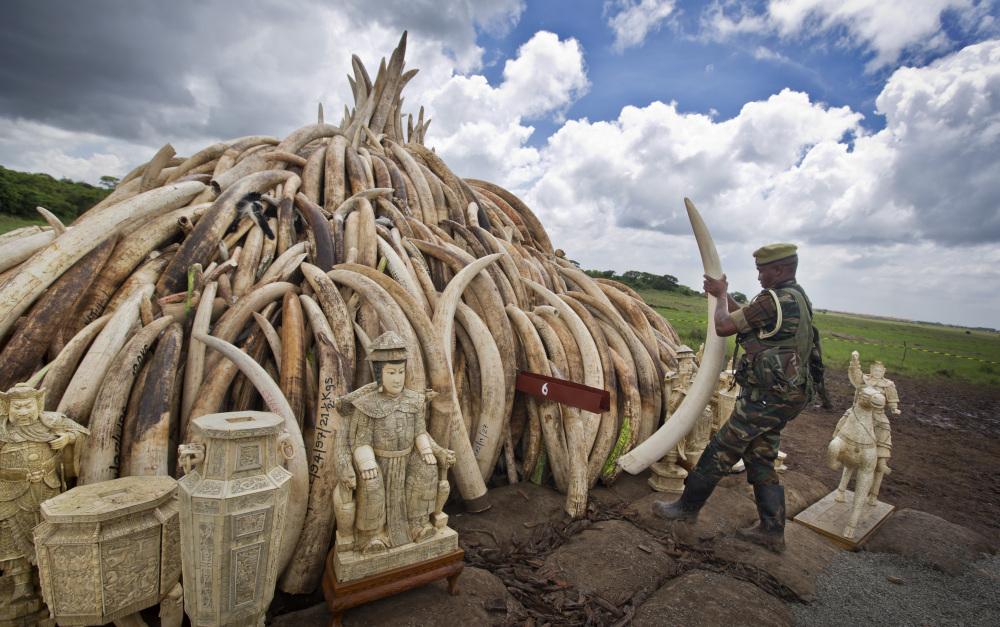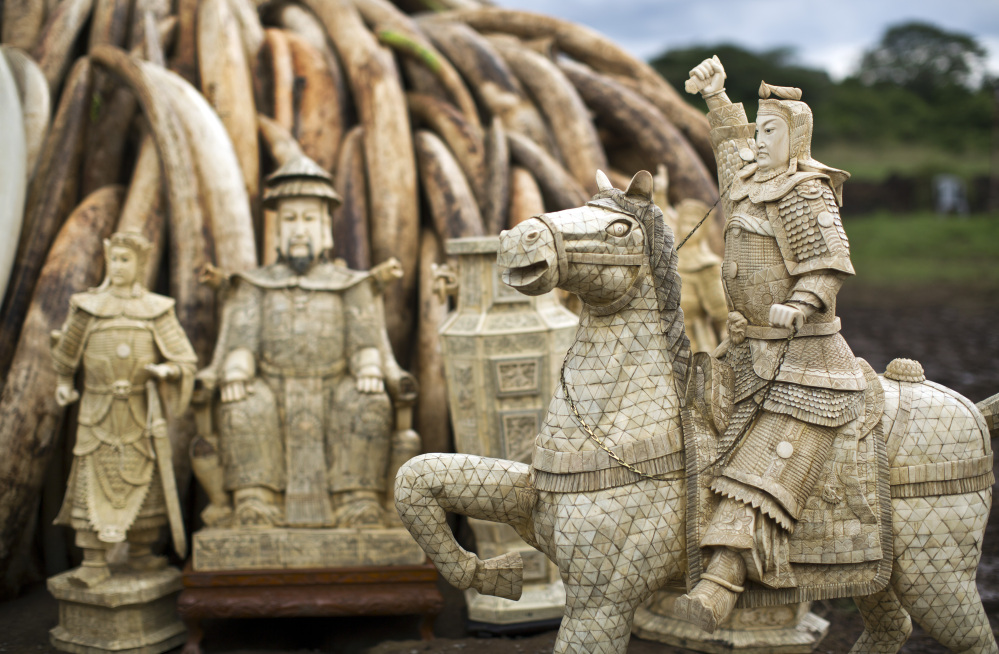NAIROBI — On Saturday, Kenyan wildlife officials will set more than 105 tons of elephant and rhino ivory on fire – a display intended to combat poaching’s growing threat.
The market for ivory across much of Asia, and particularly China, has remained strong in recent years, driving poachers in Sub-Saharan Africa to kill an enormous number of vulnerable species. The ivory burn is intended as a condemnation of that booming market. By some measures, the ivory being incinerated in Nairobi would be worth more than $150 million.
“From a Kenyan perspective, we’re not watching any money go up in smoke,” Kenya Wildlife Service Director General Kitili Mbathi told CNN. “The only value of the ivory is tusks on a live elephant.”
Between 2010 and 2012, poachers killed more than 100,000 African elephants, according to research from a team led by George Wittemyer of Colorado State University. It is a level of destruction that put the species on the road to extinction.
Kenyan wildlife officials say they hope the attention that the ivory burn is receiving will jolt potential consumers of ivory in China who might not understand the consequences their demand has had on the world’s elephant population.
“When Kenya burns $100 million worth of ivory, they’ll say, ‘What the hell was that about?’ It will help open their eyes to what is actually happening,” Kenya’s top wildlife official, Richard Leakey, told Scientific American.
Across Sub-Saharan Africa, conservationists have adopted increasingly modern anti-poaching efforts – surveillance drones, teams of armed guards, GPS-enabled elephant collars that send a signal when an animal is immobile, a sign that it might be in trouble.
But a major reasons poaching continues, experts say, is that the poachers themselves are rarely held accountable.
Only 10 percent of those arrested are prosecuted, according to the Nairobi-based nonprofit WildlifeDirect. Many of the court proceedings are fraught with corruption and suspects are often able to pay their way out of custody.
In Kenya, where tourism makes up more than 10 percent of GDP, largely because visitors come to see the wildlife, officials are trying to make an economic argument to protect the country’s wildlife. Living elephants are a key source of revenue, conservationists point out. During a full life, an elephant generates 76 times more in tourism revenue than its ivory is worth in Asia, according to the David Sheldrick Wildlife Trust.
Copy the Story LinkSend questions/comments to the editors.




Success. Please wait for the page to reload. If the page does not reload within 5 seconds, please refresh the page.
Enter your email and password to access comments.
Hi, to comment on stories you must . This profile is in addition to your subscription and website login.
Already have a commenting profile? .
Invalid username/password.
Please check your email to confirm and complete your registration.
Only subscribers are eligible to post comments. Please subscribe or login first for digital access. Here’s why.
Use the form below to reset your password. When you've submitted your account email, we will send an email with a reset code.